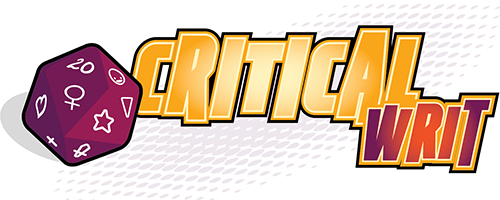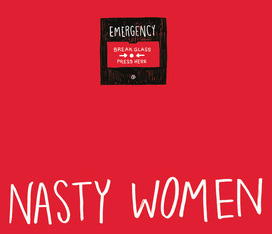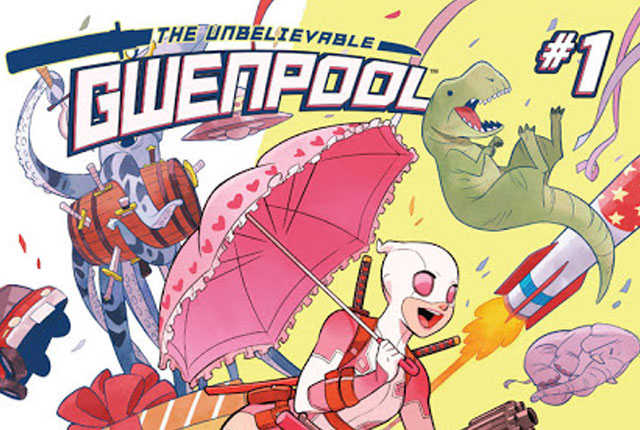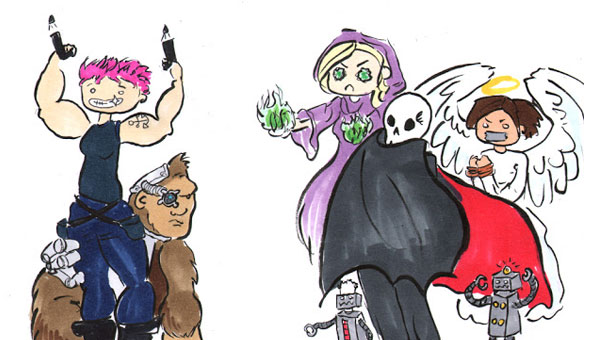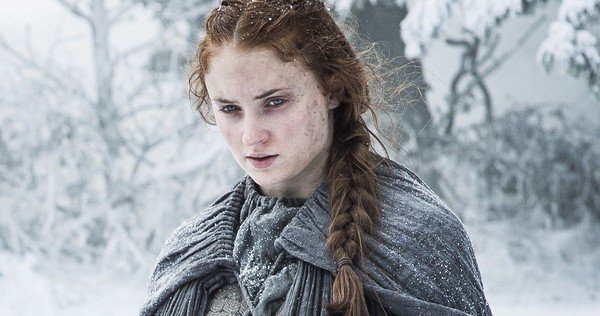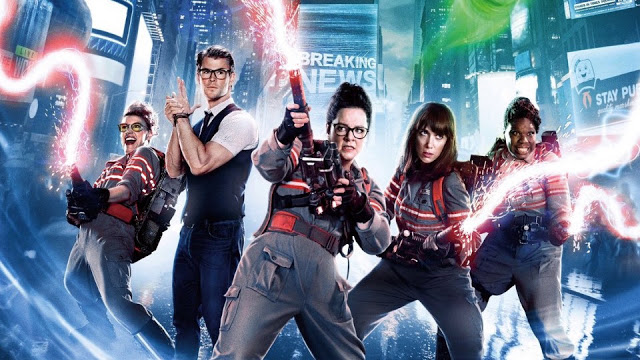Growing up in the 90s, there were a lot of shows I missed. Whether
that was because they were shortly before (or after) my time, or
because I was rarely allowed to watch a lot of television, or owing to the fact
that I never really got up early in the morning to watch them
(seriously, who wouldn’t want to sleep-in?). Basically, there’s a fair few "nostalgic" things that aren't so nostalgic to me. Time for me to
rectify this.
(This is a repost of an article from the author's blog.)
Xena: Warrior Princess is the quintessential cult show of the 90s. While it began as a spinoff of the somewhat obscure Hercules: The Legendary Journeys, for several years it was a fairly well-known name, and it retains plenty of recognition outside of its core fanbase to this day. The show managed to win an Emmy for most Outstanding Music Composition; a Simpsons episode featured Xena’s leading actor Lucy Lawless as herself… ish, and dwarf planet Eris was even for several months (unofficially) known as Xena.
Xena: Warrior Princess was a show my cousin watched regularly, but that neither my sister nor I ever watched. My only experience with Xena-related material at all was through its Nintendo 64 game, Talisman of Despair, a fighting game which contained (compared to most TV-licensed games of the time) a decent amount of references to the show, but was fairly dull otherwise. There were other Xena games, including an action platformer for the Game Boy Color made by the same people who made the infamous Superman 64, a Tomb Raider knockoff for the PlayStation, and two "Multipath" titles that were basically like those DVD special features where you can choose between two almost-identical versions of the same scene, spliced together with cut footage, only without the actual voices and done in terrible 3D animation. If you want to cause yourself great mental pain, click here.
I came into the show expecting it to be rather dull. It isn’t. The reason why it’s still very fondly remembered isn’t just nostalgia, and also not just due to the relationship between Xena and Gabrielle which, while not explicitly stated as gay, was very important to a lot of gay and pan/bi women during the 90s and early 2000s. Nor is it because Sam Raimi was the producer. Let’s cut to the chase: after watching four episodes, I can safely say that I did like it, but I couldn't get into it, and here’s why.
The show is a historical fantasy, primarily taking cues from ancient
Greek myths, but featuring elements from other ancient cultures, and using a Bulgarian folk song as the basis for its theme.
Despite the show playing fast-and-loose with history (or perhaps
because of it), it doesn’t particularly irk me—a history and
mythology buff—as much it might if it attempted to be more historically accurate.
Honestly, I prefer shows that build their own mythology rather than being an adaption of a historical event or a mythological setting. Not only do I have major qualms with the usual films and television portrayals of history conveying a conservative interpretation of events—and narratives that are regularly propagated despite having been debunked ages ago—but, as a general rule, shows still have to decide whether they want a portrayal that is accurate, or one that is entertaining. There’s a reason film adaptions of books tend to change quite a bit, after all.
The show was filmed in New Zealand, several years before Peter Jackson decided it’d make a great Middle Earth. Many of the actors in the show are played by New Zealanders doing fake American accents (which occasionally slip). Honestly, I’d have preferred the show just have the characters speaking in their native accents, but I can’t speak for how successful it would have been in the US if that had been the case. Apparently, we just take it as a given that people in "vague ancient times" spoke in modern English and American accents.
The show runs for about 45 minutes per episode but it does feel like plenty of scenes could have been cut or shortened. I don’t know if it would have been
possible to cut it down to the point where it would have fit a half-hour time-slot, but there are still plenty of moments in the show that lost
my attention completely.
The fight sequences are often surprisingly creative, contrary to my fears of them being dull and repetitive. For example, the first episode features a fight (wherein the first to touch the ground will be killed) taking place on a collapsing scaffolding, which segues into a fight literally taking place on the heads of several villagers. I am assured that there is much more in the way of “impractical, but awesome” fight scenes to come.
The character of Xena is introduced in the first episode, struggling
for redemption from her a history
as a murderous warlord; we are not told of this history in the
first episode, however, and are instead given insights and glimpses into it as
the series progresses. Much of the story is shown through the eyes of Gabrielle,
who often takes the role of the audience's avatar, by virtue of being (or
at least starting off as) a non-badass. It seems Gabrielle was planned to be the most “relatable” character of a show aimed primarily at an American audience; the American origins of the two actors selected for the part (one turned it down) is a testament to that fact. Essentially, Gabrielle is a
character whose backstory audiences can understand, since she had been living a fairly mundane life in a quiet
village—or at least as mundane as it can get for an American living in
an ancient Greek town in New Zealand.
Throughout most of the series, the character dynamic is primarily focussed on the two of them. Gabrielle escapes from her mundane life (and an arranged marriage) to tag along with Xena, despite not being quite prepared for the world that awaits, she still manages to grow as a character as the series progresses. Xena softens up slightly towards Gabrielle as their relationship improves.
While the show itself never explicitly states the relationship was of
a romantic nature, hints are regularly dropped though subtle (and not so subtle) subtext. While the writers left things ambiguous, in an interview that
was released a couple of years after the show’s finale, Lucy Lawless outright stated that Xena was “Gay, gay, definitely.” The two
characters are often revered as lesbian icons. Even today, twenty years
after the first season was aired, shows (and even films) with a lesbian
main protagonist are still rare.
I hear an argument made all the time that featuring characters who are homosexual, pansexual, asexual, transgender, and even non-white (with the latter in the case of books,) is bad for writing, as these ‘traits’ aren’t important in defining someone’s personality or character. This argument completely misses the mark. It assumes people who are heterosexual, cisgender, and white as being the ‘default,’ via the fact that it views anything to the contrary as being somehow more controversial. This is why representation matters.
Yes, neither Xena nor Gabrielle’s sexuality was ever outright stated on the show. Yes, having a main protagonist who isn’t heterosexual is still a rarity. And, yes, the gay connection with the character of Xena isn’t particularly widely-known. But the show did resonate with people, even if it didn’t have a huge impact on people around my age. All in all, I suppose there is something endearing about their relationship.
To summarize, I do like what I've seen of the series so far. It’s not a show I’ll be watching
often (I tend not to binge-watch shows), but I’m going to continue
the series, at least through the first season. I'm looking forward to an episode later in the series that introduces Bruce Campbell as Autolycus. And later on, a character who I’ve seen on several Top Villain
Lists, Callisto (portrayed by Hudson Leick) will be appearing for the
first time.
Unlike Pokémon, this has been a show that I’ve been able to legitimately enjoy, rather than simply be relieved that it wasn’t as bad as I thought. The show did give me a few good laughs, and there was even one-or-two “Oh my god, this is awesome" moments. I recommend at least checking it out if you come by it, if only to get a clearer picture of what the show is about. Trust me, the ‘multi-path’ adventure really undersells it.
In any case, it’s time to move on to a new show for next time. And it looks like I’m likely going to be doing another children’s show. Which one? Well, to the confusion of anybody who hasn’t heard of it before…
Rana Newlove is a transgender panromantic asexual activist living in Melbourne, with an obsession for music and hair dye.
(This is a repost of an article from the author's blog.)
Xena: Warrior Princess is the quintessential cult show of the 90s. While it began as a spinoff of the somewhat obscure Hercules: The Legendary Journeys, for several years it was a fairly well-known name, and it retains plenty of recognition outside of its core fanbase to this day. The show managed to win an Emmy for most Outstanding Music Composition; a Simpsons episode featured Xena’s leading actor Lucy Lawless as herself… ish, and dwarf planet Eris was even for several months (unofficially) known as Xena.
Xena: Warrior Princess was a show my cousin watched regularly, but that neither my sister nor I ever watched. My only experience with Xena-related material at all was through its Nintendo 64 game, Talisman of Despair, a fighting game which contained (compared to most TV-licensed games of the time) a decent amount of references to the show, but was fairly dull otherwise. There were other Xena games, including an action platformer for the Game Boy Color made by the same people who made the infamous Superman 64, a Tomb Raider knockoff for the PlayStation, and two "Multipath" titles that were basically like those DVD special features where you can choose between two almost-identical versions of the same scene, spliced together with cut footage, only without the actual voices and done in terrible 3D animation. If you want to cause yourself great mental pain, click here.
I came into the show expecting it to be rather dull. It isn’t. The reason why it’s still very fondly remembered isn’t just nostalgia, and also not just due to the relationship between Xena and Gabrielle which, while not explicitly stated as gay, was very important to a lot of gay and pan/bi women during the 90s and early 2000s. Nor is it because Sam Raimi was the producer. Let’s cut to the chase: after watching four episodes, I can safely say that I did like it, but I couldn't get into it, and here’s why.
 |
| “I have to admit, when you said you’d show me your one-eyed monster, I was expecting something different.” |
Honestly, I prefer shows that build their own mythology rather than being an adaption of a historical event or a mythological setting. Not only do I have major qualms with the usual films and television portrayals of history conveying a conservative interpretation of events—and narratives that are regularly propagated despite having been debunked ages ago—but, as a general rule, shows still have to decide whether they want a portrayal that is accurate, or one that is entertaining. There’s a reason film adaptions of books tend to change quite a bit, after all.
The show was filmed in New Zealand, several years before Peter Jackson decided it’d make a great Middle Earth. Many of the actors in the show are played by New Zealanders doing fake American accents (which occasionally slip). Honestly, I’d have preferred the show just have the characters speaking in their native accents, but I can’t speak for how successful it would have been in the US if that had been the case. Apparently, we just take it as a given that people in "vague ancient times" spoke in modern English and American accents.
 |
| Pictured: not the Shire |
The fight sequences are often surprisingly creative, contrary to my fears of them being dull and repetitive. For example, the first episode features a fight (wherein the first to touch the ground will be killed) taking place on a collapsing scaffolding, which segues into a fight literally taking place on the heads of several villagers. I am assured that there is much more in the way of “impractical, but awesome” fight scenes to come.
 |
| The person Xena is fighting here is portrayed by Jay Laga’ia, who played a character in the Star Wars prequels. So you know he’s evil. |
Throughout most of the series, the character dynamic is primarily focussed on the two of them. Gabrielle escapes from her mundane life (and an arranged marriage) to tag along with Xena, despite not being quite prepared for the world that awaits, she still manages to grow as a character as the series progresses. Xena softens up slightly towards Gabrielle as their relationship improves.
 |
| And, speaking of their relationship… |
I hear an argument made all the time that featuring characters who are homosexual, pansexual, asexual, transgender, and even non-white (with the latter in the case of books,) is bad for writing, as these ‘traits’ aren’t important in defining someone’s personality or character. This argument completely misses the mark. It assumes people who are heterosexual, cisgender, and white as being the ‘default,’ via the fact that it views anything to the contrary as being somehow more controversial. This is why representation matters.
Yes, neither Xena nor Gabrielle’s sexuality was ever outright stated on the show. Yes, having a main protagonist who isn’t heterosexual is still a rarity. And, yes, the gay connection with the character of Xena isn’t particularly widely-known. But the show did resonate with people, even if it didn’t have a huge impact on people around my age. All in all, I suppose there is something endearing about their relationship.
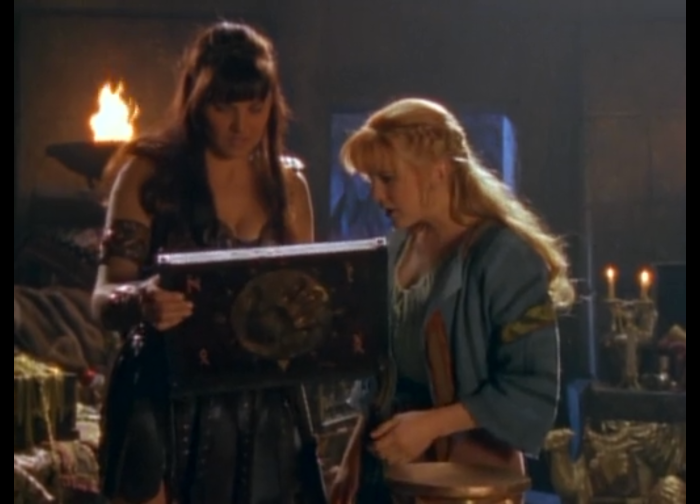 |
| “Hey, Xena, when’s Pandora’s box not a box? When it’s a jar. Like it was in the original Greek myth.” “Eh, loose adaption. Besides, Hesiod was a misogynistic piece of shit anyway.” |
Unlike Pokémon, this has been a show that I’ve been able to legitimately enjoy, rather than simply be relieved that it wasn’t as bad as I thought. The show did give me a few good laughs, and there was even one-or-two “Oh my god, this is awesome" moments. I recommend at least checking it out if you come by it, if only to get a clearer picture of what the show is about. Trust me, the ‘multi-path’ adventure really undersells it.
In any case, it’s time to move on to a new show for next time. And it looks like I’m likely going to be doing another children’s show. Which one? Well, to the confusion of anybody who hasn’t heard of it before…
Rana Newlove is a transgender panromantic asexual activist living in Melbourne, with an obsession for music and hair dye.
